The continuing loss of urban wetlands due to an expanding human population and urban development pressures makes restoration or creation of urban wetlands a high priority. However, urban wetland restorations are particularly challenging due to altered hydrologic patterns, a high proportion of impervious surface and stormwater runoff, degraded urban soils, historic contamination, and competitive pressure from non-native species. Urban wetland projects must also consider human-desired socio-economic benefits. We argue that using current wetland restoration approaches and existing regulatory “success” criteria, such as meeting restoration targets for vegetation structure based on reference sites in non-urban locations, will result in “failed” urban restorations. Using three wetland Case Studies in highly urbanized locations, we describe geophysical tools, stormwater management methods, and design approaches useful in addressing urban challenges and in supporting “successful” urban rehabilitation outcomes. We suggest that in human-dominated landscapes, the current paradigm of “restoration” to a previous state must shift to a paradigm of “rehabilitation”, which prioritizes wetland functions and values rather than vegetation structure in order to provide increased ecological benefits and much needed urban open space amenities.
1.
Introduction and main results
We are interested in the symmetry and monotonicity of solutions to the problem
where Δ1u=div(Du|Du|), Ω is a smooth bounded domain in RN, N≥2, and strictly convex. The purpose of the paper is to investigate a priori estimates and symmetric properties of the solutions when the domain is assumed to have symmetric properties and f is supposed to satisfy the following conditions (H1), (H2) and (H4). We also assume that f satisfies the following conditions (H3) and (H5) to use mountain pass lemma to get a nontrivial solution.
(H1): f:[0,+∞) is a locally Lipschitz continuous function and f(s)≥0 for ∀ s∈[0,+∞).
(H2): f(s)≤C1(1+s1∗−1), for ∀ s∈[0,+∞), with 1∗=NN−1 and a constant C1>0.
(H3): There exists θ>1, and k0>0 such that
(H4): There exists a constant C2>0 such that
where F(s)=∫s0f(t)dt.
(H5): There exists a constant α∈(0,1N−1) such that
We point out that the similar p-Laplace problems (p>1) have many applications and have been studied for a long time, more precisely, Dirichlet problems for the p-Laplace operator,
In the case p=2, the problem (1.2) −Δpu=f(u) has been widely studied. Gidas and Spruck [27] prove a priori bounds for nonlinearities f for N≥3 behave as a subcritical power at infinity, introducing the blow up method together with Liouville type theorems for solutions in RN. Figneiredo, Lions and Nussbaum [19] consider the existence and a priori estimates of positive solutions of the problem (1.2) when f satisfies the superlinear grow at infinity. They prove a priori bound for positive solutions of the problem (1.2) under the hypothesis lims→∞f(s)sN+2N−2=0, together with the monotonic results by Gidas, Ni and Nirenberg [28] obtained by the Alexandrov-Serrin moving plane method [37]. The moving plane method has been improved and simplified by Beresticky and Nirenberg [7] with the aid of the maximum principle in small domain. With the help of the blow up procedure, Azizieh and Clément [5] prove a priori estimates for the problem (1.2) in the case of Ω being a strictly convex domain and f satisfying some suitable assumption. Damascelli and Pacella [14,15] apply the moving plane method to prove some monotonic and symmetric results for the p-Laplace equation in the singular case 1<p<2, also see [6,13]. The results are later extended to the case p>2 in the papers [12,17,18]. Damascelli and Pardo [16] used the technique introduced in [19] that allowed to give the a priori estimates for solutions in case 1<p<N, case p=N, and case p>N. Esposito, Montoro and Sciunzi [24] study symmetric and monotonic properties of singular positive solutions to the problem (1.2) via moving plane method under suitable assumptions on f. However, all the above mentioned papers can not deal with the case p=1. In this paper, we can extend the case p>1 to the case p=1.
Obviously, the problem of Δ1 is different from Δp (p>1). When p=1, it is necessary to replace W1,1 by BV, the space of functions of bounded variation. A function u∈L1(Ω) is called a function of bounded variation, whose partial derivatives in the sense of distribution are Radon measures. We point out that the space W1,p(Ω) is reflexive, however, the space BV(Ω) is not reflexive, so that we can not follow the arguments on Δp. The 1-Laplace operator Δ1 introduces some extra difficulties and special features. The first difficulty occurs by defining the quotient Du|Du|, Du being just a Radon measure. To deal with the 1-Laplacian operator, we need the theory of pairing of L∞ divergence measure vector fields (see the pioneering works [3,4,8]).
Demengel [21] is concerned with existence of solution in BV(Ω) to the problem −divz+zsignu=f|u|1∗−2u with z⋅∇u=∇u in Ω and −z⋅γ=u on ∂Ω. Demengel [22] is devoted to the elliptic equations with 1-Laplacian operator
and introduces the concept of locally almost 1-harmonic functions in Ω. The comparison principle, the first eigenvalue and related eigenfunctions for the 1-Laplacian operator are established in [22]. Kawohl and Schuricht [30] consider a number of problems that are associated with the 1-Laplace operator Δ1, the formal limit of the p-Laplace operator as p→1, by investigating the underlying variational problem. Since the corresponding solution typically belongs to BV and not to W1,1, they have to study the minimizers of the functionals containing the total variation. In particular, they look for constrained minimizers subject to a prescribed L1 norm which can be considered as an eigenvalue problem for the 1-Laplace operator. Degiovanni and Magrone [20] are concerned with the problem (1.3) with f(x,u)=λu|u|+|u|1∗−2u. It is proved that for every λ≥λ1, the problem (1.3) admits a nontrivial solution by the non-standard linking methods. Salas and Segura de León [35] study the problem (1.3) with f(x,u) satisfying subcritical growth; i.e., |f(x,u)|≤C(1+|u|q) with 0<q<1∗−1. They prove that for the problem (1.3) there exists at least two nontrivial solutions, one nonnegative and one nonpositive, by using known existence results for the p-Laplacian (p>1) and considering the limit as p→1+. De Cicco, Giachetti, Oliva and Petitta [9] study the existence and regularity of special distributional nonnegative solutions to the boundary value singular problem (1.3) with f(x,u)=h(u)g(x). They show existence of nonnegative solutions to (1.3) with umax{1,γ}∈BV(Ω). These solutions are obtained as a limit as p→1+ of nonnegative solutions of the p-Laplacian problems −Δpup=h(up)g with up=0 on ∂Ω. We also refer to [33,34,35,36,38] for the a priori estimates and gradient estimates of solutions. In this paper we can study the monotonicity and symmetry of positive solution to the 1-Laplace problem and show the a priori estimates for the solution.
By the theory of pairing of L∞ divergence measure vector fields, we introduce the following definition of solutions to the problem (1.1).
Definition 1.1. We say that u∈BVloc(Ω), u>0, is a solution to problem (1.1) if there exists a vector field z∈DM∞(Ω) with ‖z‖L∞≤1 such that
where γ is the unit exterior normal on ∂Ω, and the spaces BVloc(Ω) and DM∞(Ω) are given in Section 2.
To state more precisely some known result about the monotonicity and symmetry of solutions of the problem (1.1), we need some notations. Let ν be a direction in RN. For a real number μ we define
and
If μ>a(ν) then Ωνμ is nonempty, thus we set
Following [6] and [12,13,14,15,16,17,18], we observe that μ−a(ν) small then (Ωνμ)′ is contained in Ω and will remain in it, at least until one of the following occurs:
(A) (Ωνμ)′ becomes internally tangent to ∂Ω.
(B) Tνμ is orthogonal to ∂Ω.
Let Π1(ν) be the set of those μ>a(ν) such that for each η<μ none of the conditions (A) and (B) holds and define
Moreover, let
and
Since Ω is supposed to be smooth, note that neither Π1(ν) nor Π2(ν) are empty and Π1(ν)⊂Π2(ν), so that μ1(ν)≤μ2(ν).
We deal with solutions to the problem (1.1) in the sense of Definition 1.1. Our main result is stated as follows.
Theorem 1.2. Let Ω be a smooth bounded domain in RN, N≥2, which is strictly convex. Assume the nonlinearity f satisfies the conditions (H1)−(H5). Then there exists a nontrivial positive solution u to the problem (1.1) in the sense Definition 1.1, bounded in L∞(Ω) (i.e., u∈L∞(Ω)), and for any direction ν and for μ in the interval (a(ν),μ1(ν)],
where a(ν) and μ1(ν) are given by (1.7) and (1.8) respectively.
If f is locally Lipschitz continuous in the closed interval [0,+∞), the condition (1.10) holds for any μ in the interval (a(ν),μ2(ν)].
Corollary 1.3. Let the smooth bounded domain Ω⊂RN, N≥2, be strictly convex with respect to a direction ν and symmetric with respect to the hyperplane Tν0={x∈RN∣x⋅ν=0}. Assume that the nonlinearity f satisfies the conditions (H1)−(H5), which is locally Lipschitz continuous in the closed interval [0,+∞) and strictly positive in (0,+∞). Then there exists a nontrivial positive solution u to the problem (1.1) in the sense Definition 1.1, bounded in L∞(Ω), almost everywhere symmetric, i.e., u(x)=u(xν0) and nondecreasing in the ν-direction a.e. in Ων0.
Remark 1.4. Since the moving plane procedure can be performed in the same way but in the opposite direction, then it is obvious that Corollary 1.3 is obtained by Theorem 1.2 (see Corollary 2.4 of [16]).
2.
Preliminaries on BV space
Throughout this paper, Ω denotes an bounded subset of RN with Lipschitz boundary. The symbol |Ω| stands for its N dimensional Lebesgue measure and HN−1(E) for the N−1 dimensional Hausdorff measure of a set E⊂RN. An outward normal with vector γ=γ(x) is defined for HN−1 a.e. x∈∂Ω. We will denote by W1,p0(Ω) the usual Sobolev space, of measureable functions having weak gradient in Lp(Ω;RN) and zero trace on ∂Ω. If 1<p<N, denote by p∗=NpN−p its critical Sobolev exponent. BV(Ω) will denote the space of functions of bounded variation
where Dv:Ω→RN is the distributional gradient of u. It is endowed with the norm by
where
BV(Ω) is a Banach space which is non-reflexive and non-separable. The notion of a trace on the boundary can be extended to functions v∈BV(Ω) and this fact allows us to write v|∂Ω. Moreover, the trace defines a linear bounded operator i:BV(Ω)↪L1(∂Ω) which is onto. By the trace, we have an equivalent norm on BV(Ω)
where HN−1 denotes the N−1 dimensional Hausdorff measure. We will often use this norm in what follows. In addition, the following continuous embeddings hold
which are compact for 1≤m<NN−1 (see for instance [25,41]). We denote by M(Ω) the space of Radon measures with finite total variation over Ω, by
and by
The theory of L∞ divergence measure vector fields is due to Anzellotti [4] and Chen and Frid [8]. We define the following distribution (z,Dv)
for ∀ φ∈C1c(Ω). In Anzellotti's theory we need some compatibility conditions, such as divz∈L1(Ω) and v∈BV(Ω)∩L∞(Ω) or divz a Radon measure with finite total variation and v∈BV(Ω)∩L∞(Ω)∩C(Ω).
Lemma 2.1 ([34,35]). Let v∈BVloc(Ω)∩L1(Ω,μ) and z∈DM∞loc(Ω). Then the distribution (z,Dv) defined in (2.1) previously satisfies
for all open set U⊂⊂Ω and all φ∈C1c(U).
Lemma 2.2 ([34,35]). The distribution (z,Dv) is a Radon measure. It and its total variation |(z,Dv)| are absolutely continuous with respect to the measure |Dv| and
holds for all Borel sets B and for all open sets U such that B⊂U⊂Ω.
Lemma 2.3 ([10,11,34]). Let z∈DM∞loc(Ω) and let v∈BV(Ω)∩L∞(Ω). Then zv∈DM∞loc(Ω). Moreover, the following formula holds in the sense of measures
It follows from Anzellotti's theory that every z∈DM∞(Ω) has a weak trace on ∂Ω of the normal component of z which is denoted by [z,γ] with γ the unit exterior normal on ∂Ω, which satisfies
and
for all z∈DM∞(Ω) and v∈BV(Ω)∩L∞(Ω).
Lemma 2.4 (Green formula [10,11,34]). Let z∈DM∞loc(Ω), ϖ=divz and v∈BV(Ω) and assume v∈L1(Ω,μ). Then vz∈DM∞(Ω) and the following holds
Lemma 2.5 ([34,35]). Let z∈DM∞loc(Ω) and v∈BV(Ω)∩L∞(Ω). If vz∈DM∞(Ω), then
3.
Weak solution to p-Laplacian problem
Let p0:=min{θ,NN−1}, with θ>1 given by (H3). For each 1<p<p0, let us consider the following problem
where Ω is a bounded smooth domain in RN, N≥2, 1<p<p0 and f:[0,+∞)→R satisfies the conditions (H1)−(H5). We need the following propositions and a priori estimates of p-Laplace equation to prove Theorem 1.2.
Definition 3.1. We say up∈W1,p0(Ω), up≥0, is a weak solution to the problem (3.1) in the sense that
for ∀ φ∈W1,p0(Ω).
If up∈W1,p(Ω) is a weak solution of the problem (3.1) with f satisfying the critical growth, then up∈C1,α(Ω) with α∈(0,1) (see [23,31,40]), so that we suppose from the beginning a C1 regularity for the solution. Next, we recall some results on the monotonicity and estimates of solutions for the p-Laplace equation. One can refer to [1,16,19,29,32] for the proof of the following Proposition 3.2-3.7.
Proposition 3.2 ([16]). Let Ω be a smooth bounded domain in RN, N≥2, 1<p<∞, f:[0,∞)→R a continuous function which is locally Lipschitz continuous in (0,∞) and strictly positive in (0,∞) if p>2. Let w∈C1(¯Ω) be a weak solution of (3.1). Then for any direction ν and for μ in the interval (a(ν),μ1(ν)], we have
If f is locally Lipschitz continuous in the closed interval [0,+∞), then (3.3) holds for any μ in the interval (a(ν),μ2(ν)], where a(ν), μ1(ν) and μ2(ν) are given by (1.7), (1.8) and (1.9).
Proposition 3.3 ([16,19]). Let Ω be a strictly convex bounded smooth domain, and define Ωδ={x∈Ω∣dist(x,∂Ω)>δ}, for δ>0. Then the following result holds for a weak solution w∈C1(Ω) of the problem (3.1) with f satisfying the condition (H1)
Ix is a part of a cone Kx with vertex in x, where all the Kx are congruent to a fixed cone K, and if x∈Ω∖Ωε2, then Ix=Kx∩Ωε2.
Proposition 3.4 ([32]). Let us define
where θ is given by (H3). Then, λ1 is the first eigenvalue of the operator −Δp0 (λ1≤λ for any eigenvalue λ), it is simple, i.e., there is only an eigenfunction up to multiplication by a constant, and it is isolated. Moreover a first eigenfunction does not change sign in Ω and by the strong maximum principle it is in fact either strictly positive or strictly negative in Ω. So we can select a unique eigenfunction ϕ1 such that
The following extension of the Picone's identity for the p-Laplacian has been proved in [1].
Proposition 3.5 (Picone's identity [1]). Let v1,v2≥0 be differentiable functions in an open set Ω, with v2>0 and p>1. Set
and
Then R(v1,v2)=L(v1,v2)≥0.
As a consequence we have
The following extension of the Pohozaev's identity for the p-Laplacian has been given by [29].
Proposition 3.6 (Pohozaev's identity for p-Laplace [29]). Let w∈W1,p0(Ω)∩L∞(Ω), p>1, be a weak solution of the problem
where Ω is a bounded smooth domain in RN, N≥2 and f:[0,+∞)→R is a continuous function. Denote F(w)=∫w0f(s)ds. Then
where γ is the unit exterior normal on ∂Ω.
We need also local W1,∞(Ω) result at the boundary. This result follows from the global estimates by Lieberman [31] extending the local interior estimates by Dibenedetto [23].
Proposition 3.7 ([16]). Let Ω be a smooth bounded domain in RN, N≥2, and w∈C1(¯Ω) be a solution of the problem
with h∈L(p∗)′(Ω). For δ>0, let Ωδ={x∈Ω∣dist(x,∂Ω)>δ} and suppose that w,h∈L∞(Ω∖Ωδ) with
Then there exists a constant C>0 only depending on M and δ such that
Next, we will give the estimate of the solution for the problem (3.1).
Theorem 3.8. If up is a weak solution to the problem (3.1) and f satisfies the conditions (H2)−(H4), then up satisfies
where the constant C′>0 is not dependent on p.
Proof. By 1<p<p0, Proposition 3.4, Proposition 3.5 with v2=up, v1=ϕ1 and Young's inequality, we have
By the condition (H3), there exists a constant C3>0 such that
that is
where k1=max{k0,1} and k0 is given by (H3).
Indeed, from (H3), it holds
Setting k1=max{k0,1} and integrating the above inequality (3.7) with respect to t on the interval [k1,s], one has
That is
Setting C3:=kθ1θF(k1) in (3.8), we get
Considering (3.9) and sf(s)≥θF(s), for s≥k1, one gets the inequality (3.6).
Now, taking into account (3.5), (3.6) with s=up and Young's inequality, we get
where λ1+|Ω| is given by (3.5) and −C3∫{0<up≤k0}f(up)up−1pϕp1dx≤0 is given by the condition (H1) (f(s)≥0, for all s≥0) respectively, and the last inequality is given by Proposition 3.4 with ∫Ωϕp01dx=1 and k1=max{k0,1}≥1. By Proposition 3.3 and (3.10), for any x∈Ω∖Ωδ, we have that
i.e.,
where the constant C5 may be depend on C4, σ, θ, p0 and ϕ1 by (3.11), but are independent of p. Estimate (3.11) gives the uniform L∞ bounds near the boundary: ∃ δ>0 and C5>0 such that
for ∀ up∈W1,p0(Ω) satisfying the problem (3.1). On the other hand, from the condition (H2) and (3.12), we have
It is clear that f(up(⋅))∈L(p∗)′ is given by the condition (H2) and Sobolev embedding. By Proposition 3.7, (3.12) and (3.13), we get
where the constant C7>0 is only depending on C5, C6 and δ. By Proposition 3.6 (Pohozaev's identity)
p∗=NpN−p>NN−1=1∗ and (H4), there exists a large enough constant k2>0 such that
as s≥k2, so that by the condition (H2) and taking s=up in (3.15)
That is
From the definitions of C5, C6, C7 and C8, i.e., (3.11)-(3.14) and (3.16), we obtain that the constant C′ is not dependent on p. The proof of Theorem 3.8 is completed.
The following existence result holds.
Theorem 3.9. Let f satisfy the conditions (H1), (H2), (H3) and (H5). Then there exists a nontrivial positive solution up to the problem (3.1).
Proof. By the conditions (H1), (H2), (H3) and (H5), it is well known that there exists a nontrivial solution up≥0 to the problem (3.1). The positive solution up is obtained using the mountain pass lemma by Ambrosetti and Rabinowitz [2] for the following truncated functional J+p:W1,p0(Ω)→R given by
where F+(s)=∫s0f+(t)dt and
We claim that J+p satisfies the structure of mountain pass lemma and the (P−S) condition.
Indeed, by the condition (H5), 0 is a local minimum of J+p. From the condition (H3), there exist two constants ˜C, ˆC>0, such that
for all s∈[0,+∞) with θ>1. This implies that
for ∀ w∈W1,p0(Ω). We can choose a w0∈W1,p0(Ω) and ‖w0‖W1,p0=1 such that
as t→+∞, with 1<p<p0:=min{θ,NN−1}. Whence there exists a large number t0>0 such that
We set e:=t0w0∈W1,p0(Ω). Since (H2) and the embedding W1,p0(Ω)↪L1∗(Ω), 1∗=NN−1<NpN−p=p∗, is compact, we obtain that f+ satisfies the subcritical grow, i.e.,
Considering (3.21) and (H3), J+p satisfies the (P−S) condition.
4.
The proof of Theorem 1.2
In this section we prove our main results concerning the case p=1, namely Theorem 1.2. Under the same assumption of Theorem 1.2, we divide the proof into few steps.
Step 1. Existence of a solution u and a field z.
Step 2. (z,Du)=|Du| as measures in Ω.
Step 3. [z,γ]∈ sign(−u) on ∂Ω.
Step 4. The monotonicity of solution u.
Step 5. u∈L∞(Ω).
Step 6. u is nontrivial.
Step 1. Existence of a solution u for the problem (1.1) and existence of a field z∈DM∞(Ω) satisfying (1.4) and ‖z‖L∞≤1.
Proof of Step 1: From Theorem 3.8, we obtain that up is bounded in W1,p0(Ω)↪Lm(Ω), with 1≤m≤NN−1<p∗=NpN−p, 1<p<p0<2≤N.
as p→1+.
Next, we will show that there exists a vector field z satisfying (1.4). Recalling Theorem 3.8, we obtain that {up} is bounded in W1,p0(Ω)⊂BV(Ω). So that for 1≤r<p′=pp−1, we have
and thus
where the constant C8 is given by (3.16). This implies that |∇up|p−2∇up is bounded in Lr(Ω;RN) with respect to p. Then there exists zr∈Lr(Ω;RN) such that
as p→1+. A standard diagonal argument shows that there exists a unique vector field z which is defined on Ω independently of r, such that
as p→1+. By applying the semicontinuity of the Lr norm the previous inequality (4.4) implies
so that, letting r→∞ we have z∈L∞(Ω;RN) and
Using φ∈C1c(Ω) with φ≥0 as a test function in (3.1), we have
Taking p→1+ in the left hand side of (4.7) and by (4.6), we get
for ∀ φ∈C1c(Ω). On the other hand, thanks to (4.2) and f(s) a locally Lipschitz continuous function, we have
Moreover, we deduce from (H2) and (4.3) that
Consequently, by the Dominated Convergence Theorem, we get
for ∀ φ∈C1c(Ω). Therefore, (4.7), (4.8) and (4.9) imply that
Step 2. (z,Du)=|Du| as measures in Ω.
Before proving (z,Du)=|Du|, we need the following lemma for which one can refer to [9].
Lemma 4.1 ([9]). Under the same assumptions of Theorem 1.2, the following identity holds
for ∀ φ∈C1c(Ω).
Proof of Step 2: We take upφ∈W1,p0(Ω) as a test function in (3.1) with 0≤φ∈C1c(Ω), maxx∈Ω|φ(x)|=M0 and get
By Young's inequality and Fatou's Lemma, we estimate the first integral term in (4.12)
On the other hand, by (4.6) we have
From
and the Dominated Convergence Theorem, we obtain the right hand side of (4.12) is as follows
From (4.12)-(4.15), we have
By (4.16) and Lemma 4.1, we also have
Therefore, by (2.1), we get
The arbitrariness of φ implies that
as measures in Ω. On the other hand, since ‖z‖L∞≤1, and
as measures in Ω, we have
Step 3. The boundary condition [z,γ]∈ sign(−u) on ∂Ω.
Proof of Step 3: It is easy to check that this fact is equivalent to show
Choosing up as a test function in (3.1), we have
Since up∈W1,p0(Ω) is bounded, by the fact that up=0 on ∂Ω and Young's inequality, we get
We use the lower semicontinuity (4.18) to pass to the limit as p→1+ and obtain
where the last equality is given by the Dominated Convergence Theorem and
Furthermore, by Lemma 2.3 and Lemma 2.4, we have
From (z,Du)=|Du|, (4.19) and (4.20), we have
The inequality (4.21) and |u|≥|u|‖z‖L∞≥|u[z,γ]|≥−u[z,γ] give the desired equality (4.17) and we conclude that
Step 4. The monotonicity of the solution u of problem (1.1).
Proof of Step 4: By Proposition 3.2, we obtain up satisfies the following result. For any direction ν and μ in the interval (a(ν),μ1(ν)], then
where a(ν) and μ1(ν) are given by (1.7) and (1.8). Considering this fact and up(x)→u(x) a.e. in Ω, taking p→1+ in (4.22), we have
We get the result of monotonicity for the solution u. Inequality (4.23) also holds for any μ∈(a(ν),μ2(ν)] by Proposition 3.2, if f is locally Lipschitz continuous, and a(ν) and μ2(ν) are given by (1.7) and (1.9).
Step 5. The boundedness of the solution u, i.e., u∈L∞(Ω).
Before proving u∈L∞(Ω), we need to prove the following lemma.
Lemma 4.2. For every ε>0 there exists k3>0 which does not depend on p, such that
for every k≥k3 and ∀ p∈(1,p0), with Ak={x∈Ω∣up(x)>k}.
Proof of Lemma 4.2: Using Sobolev embedding W1,p0(Ω)⊂BV(Ω)↪LNN−1(Ω), Theorem 3.8 and Holder's inequality, we obtain that
where S1 is given by the best Sobolev constant
see [26,39], and |Ak| stands for its N dimensional Lebesgue measure. Inequality (4.25) implies that limk→∞|Ak|=0. It holds that for ∀ ε>0, there exists a large number k4>0 such that
On the other hand, by Sobolev embedding up∈W1,p0(Ω)⊂BV(Ω)↪LNN−1(Ω), Theorem 3.8 and (4.3), we get
and
which implies that up(x)<∞ a.e. in Ω. Considering (4.27), limk→∞|Ak|=0 and by absolute continuity of integrable function, we have
From (4.28), for ∀ ε>0, ∃ k5>0 large enough (not depend on p) and δ>0 small enough such that as k≥k5, we have |Ak|<δ and
From (4.26) and (4.29), we obtain
for all k≥k3:=max{k4,k5}. The proof of Lemma 4.2 is completed.
Proof of Step 5: Next, we would like to use Stampacchia truncation [38] to prove the boundedness of the positive solution u. For every k>0, we define the auxiliary function Gk:[0,∞)→R as
Then, choosing Gk(up) as a test function in (3.1), we get
By (4.31), (H2), Sobolev embedding, Young's inequality and Holder's inequality, we have
By Lemma 4.2 and taking ε=1(2C1S1)N, there exists k3>0 which does not depend on p, such that
for all k≥k3 and p∈(1,p0). Consequently, from (4.32) and (4.33) we obtain
Since up(x)→u(x) a.e. x∈Ω and Fatou's Lemma, we can pass to the limit on p→1+ in (4.34), to conclude that
for ∀ k≥k3>0. Thus u∈L∞(Ω).
Step 6. u is nontrivial.
Proof of Step 6: For ∀ v∈BV(Ω), we define the functional J+:BV(Ω)→R as
where F+(s)=∫s0f+(t)dt and f+ is given by (3.18).
We will say that v0∈BV(Ω) is a critical point of J+ if there exists z∈DM∞(Ω) with ‖z‖L∞≤1 such that
where γ is the unit exterior normal on ∂Ω. The critical points of J+ coincide with solutions to the problem (1.1) in the sense Definition 1.1, for which one can refer to [9] or [35].
We shall show that 0 is a local minimum of J+.
Indeed, by the condition (H5), there exists small enough δ>0 such that
for ∀ |s|∈(0,δ) and for some constant C9>0 with α∈(0,1N−1). Moreover, by the definition of F+(s), we have
for ∀ |s|∈(0,δ). By (4.35) and the norm ‖v‖BV=∫Ω|Dv|+∫∂Ω|v|dHN−1, v∈BV(Ω), it holds
where the last inequality is given by the embedding BV(Ω)↪L1+α(Ω), α∈(0,1N−1). Choosing a positive constant ρ<min{δ,(12C10)1α}, we obtain
for ∀ v∈BV(Ω) and ‖v‖BV≤ρ. This implies that 0 is a local minimum of J+.
Now, we introduce the auxiliary functional
where J+p is given by (3.17). By Young's inequality and (4.18), we can fix p∈(1,p0) and obtain
for ∀ w∈W1,p0(Ω)⊂BV(Ω), with p0=min{θ,NN−1}. From (4.38) and (3.19), one gets
for all w∈W1,p0(Ω) with p<p0<θ. Recalling the structure of mountain pass lemma in Theorem 3.9, we can deduce that there exists e=t0w0∈W1,p0(Ω)⊂BV(Ω) and ‖e‖BV>ρ such that J(e)<0 by (3.20).
Obviously, the critical points of Ip are identical with the critical points of J+p. Then up given by Theorem 3.9 is a critical point of J+p, and also a critical point of Ip, which implies that the critical point up satisfies
where Γp={η∈C([0,1],W1,p0(Ω))∣η(0)=0,η(1)=e}. Considering any path η∈Γp and the continuity of the map t→Ip(η(t)), there exists t0>0 such that ‖η(t0)‖BV=ρ. From (4.36), (4.38), (4.40) and ‖η(t0)‖BV=ρ, we obtain that
On the other hand, choosing up as a test function in (3.1), by the Dominated Convergence Theorem, (4.2) and (4.20), we have
where the last equality is given by Step 2 and Step 3. From (H2), (4.2) and (4.3), we can apply the Dominated Convergence Theorem to obtain
By (4.37), (4.42) and (4.43), we can get
Summarizing (4.41) and (4.44) we obtain that
with 0<ρ<min{δ,(12C10)1α}, and then u is nontrivial, because J+(0)=0.
The proof of Theorem 1.2 is completed.
Acknowledgments
The author sincerely thanks the editors and reviewers for their valuable suggestions and useful comments. This work was supported by the Natural Science Foundation of Jiangsu Province of China (BK20180638).
Conflict of interest
For the publication of this article, no conflict of interest among the authors is disclosed.











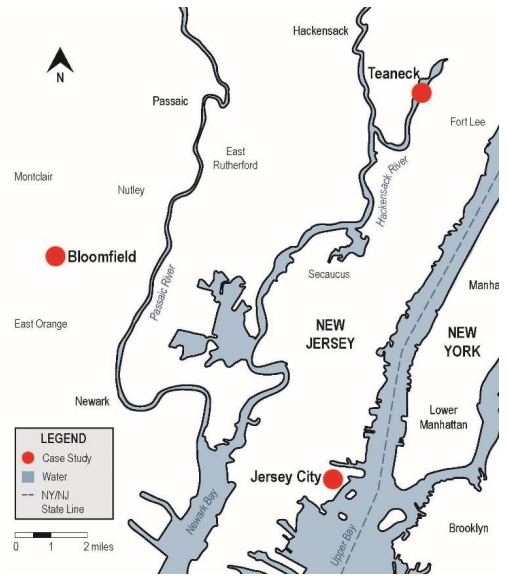
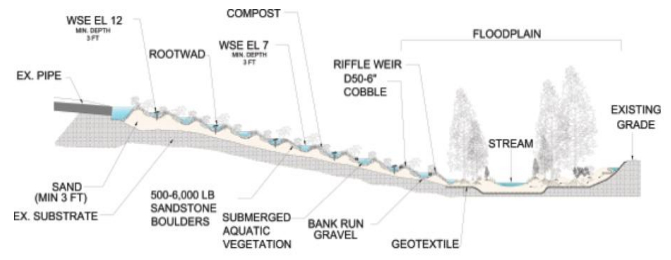
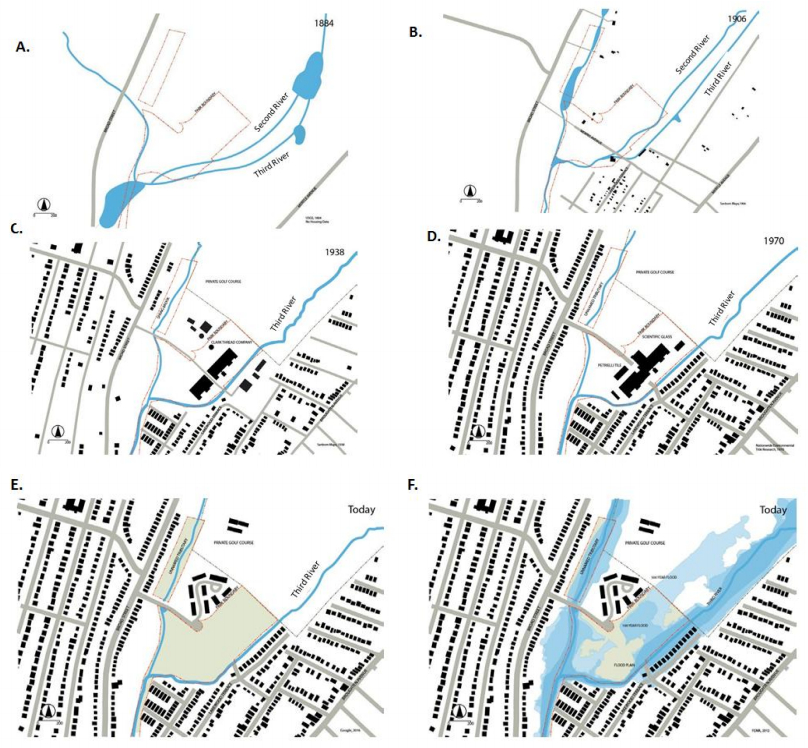
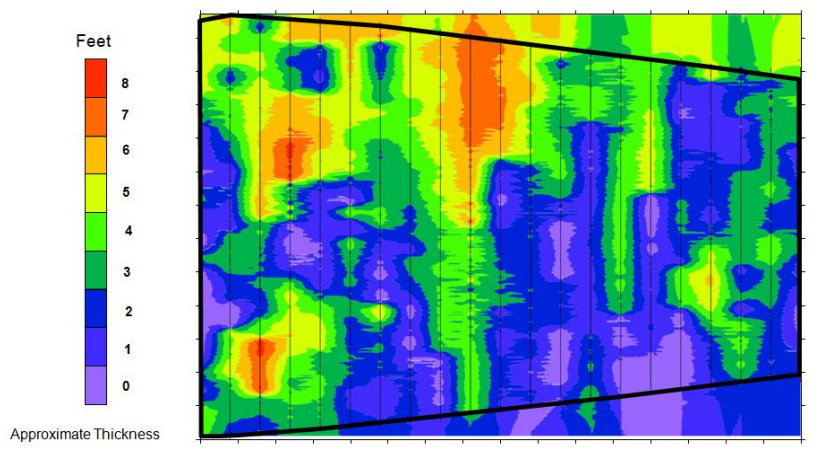

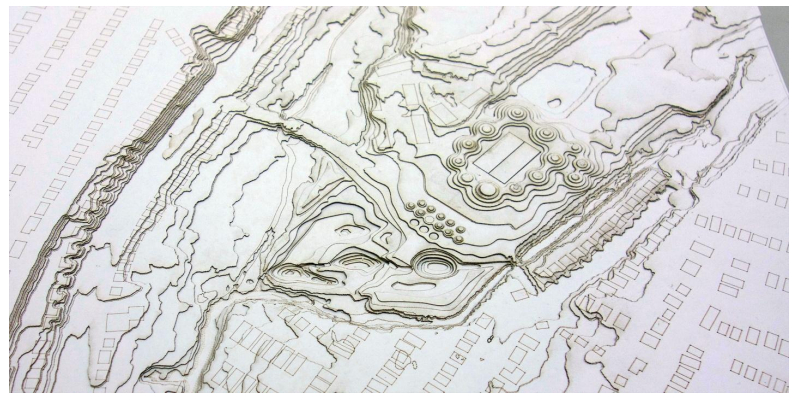
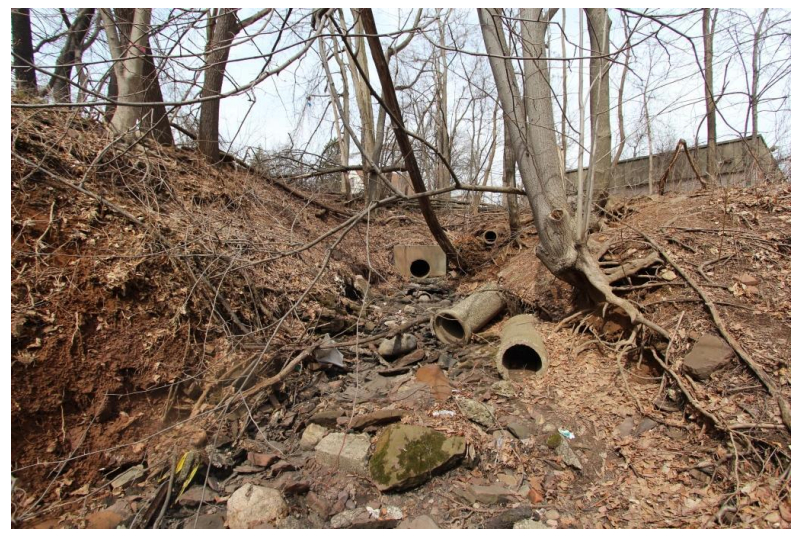

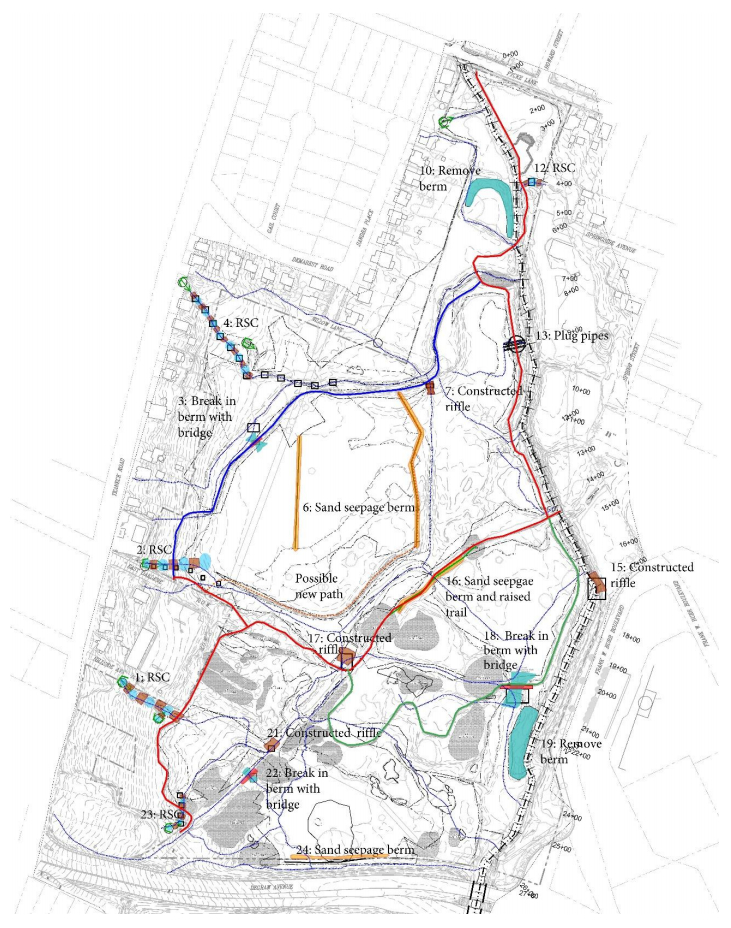
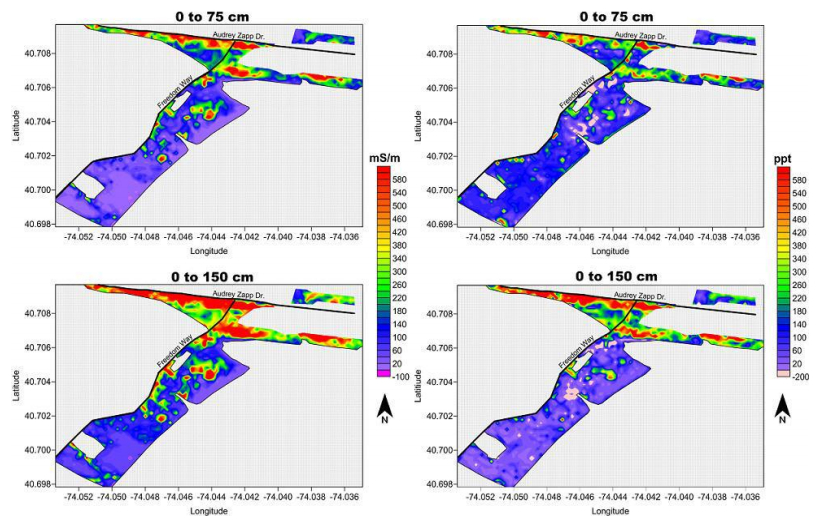
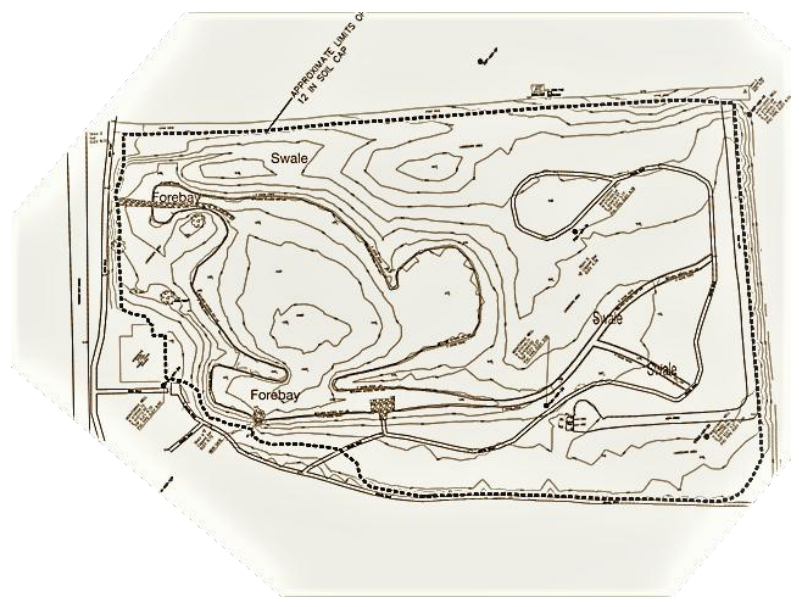


 DownLoad:
DownLoad: